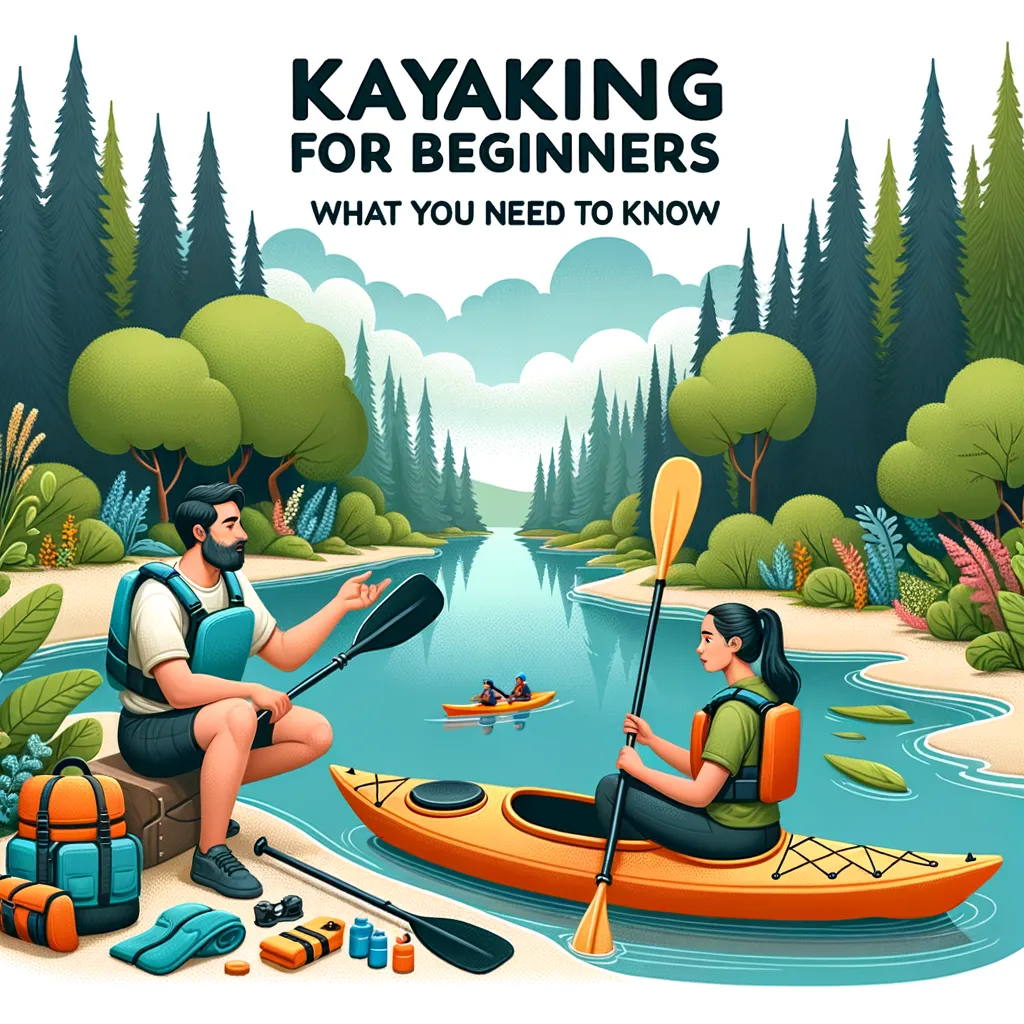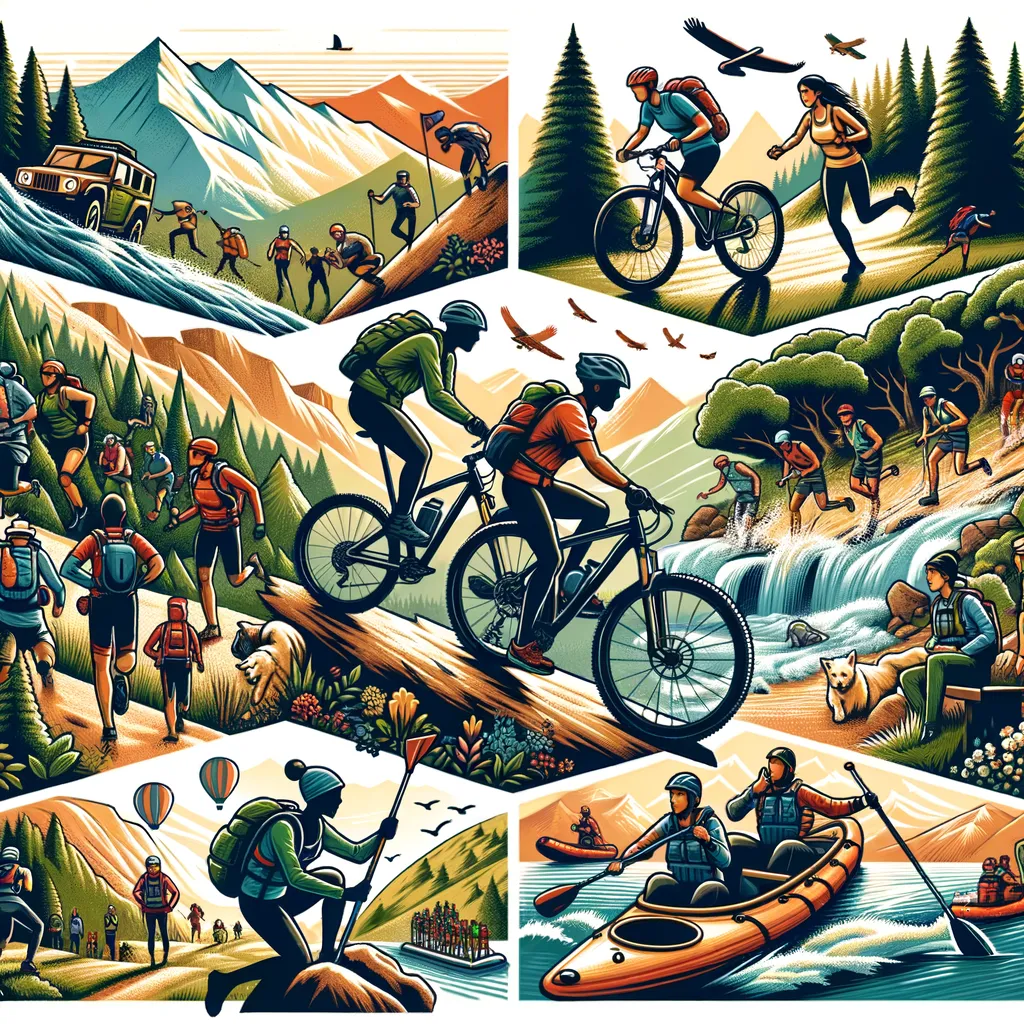Kayaking for Beginners: What Parents Need to Know
Welcome to our ultimate guide on kayaking for beginners, tailored especially for parents looking to embark on this wonderful adventure with their children! Kayaking is not only a fantastic way to explore the beauty of nature, but it’s also an excellent opportunity for family bonding and teaching children valuable life skills. So, grab your paddles, and let’s dive into everything you need to know to make your kayaking journey as enjoyable and safe as possible.
Understanding the Basics of Kayaking
Before you and your little ones hit the water, it’s important to familiarize yourself with the basic concepts of kayaking. Kayaking involves navigating a small, narrow watercraft through water using a double-bladed paddle. It’s a versatile activity that can be enjoyed in various water bodies, including rivers, lakes, and even the ocean. Whether you’re seeking a tranquil paddle around a serene lake or an adrenaline-pumping adventure down a flowing river, kayaking offers something for every type of adventurer.
Choosing the Right Kayak
One of the first steps in your kayaking journey is selecting the right kayak. There are different types of kayaks available, each tailored for specific water environments and activities. For beginners, especially those kayaking with children, seeking stable and user-friendly kayaks is key. Sit-on-top kayaks are highly recommended for novices due to their stability and ease of entry and exit. They’re ideal for leisurely paddles in calm waters and are very forgiving in the event of a capsize. Another option is the tandem kayak, perfect for parents who want to stay close to their children while on the water.
Kayaking Gear and Safety Equipment
Safety should always be your top priority when kayaking, especially with children. Ensuring that you and your family are equipped with the right gear is paramount. Essential items include:
- Life Jackets (PFDs): Make sure every family member has a properly fitting personal flotation device (PFD). They should be worn at all times while on the water, no exceptions.
- Helmets: If you’re planning on river kayaking, helmets are a must. They provide important protection against bumps and bruises from unexpected encounters with rocks or tree branches.
- Water Shoes: Protect your feet from rocks and slippery surfaces with a sturdy pair of water shoes.
- Whistle: A whistle attached to each PFD is a simple yet effective safety tool for signaling during emergencies.
Basic Kayaking Techniques
Mastering a few basic kayaking techniques will make your experience much more enjoyable and safe. Here are some fundamentals to get you started:
- The Forward Stroke: This is the most basic and commonly used stroke, propelling the kayak forward. It involves rotating your torso while dipping the paddle blade fully into the water and pulling it back towards you, alternating sides to move straight.
- The Reverse Stroke: Used to slow down or move backwards, the reverse stroke is essentially the forward stroke performed in reverse.
- The Sweep Stroke: This stroke helps you turn the kayak. A wide, sweeping motion with the paddle on one side of the kayak will turn the boat in the opposite direction.
Kayaking is a rewarding activity that offers countless opportunities for adventure and family fun. By understanding the basics, choosing the right equipment, and mastering fundamental techniques, you and your children will be well on your way to creating memorable experiences on the water. Stay tuned for more detailed insights into kayaking adventures, where we will delve deeper into tips for paddling with kids, navigating different types of waters, and much more.
Kayaking is not just about navigating through waters, but it’s also about embracing the great outdoors, sharing incredible moments with your family, and teaching your kids about the importance of nature conservation. As you gear up for your kayaking adventure, remember to approach each experience with an open mind, patience, and above all, a focus on safety and fun.
This content has been optimized for SEO, focusing on keywords such as “Kayaking for beginners,” “kayaking with children,” and “family kayaking adventure.” It’s structured to provide clear, accessible information and encourage further reading, perfect for immediate publishing on a WordPress site.

5 Essential Tips for Parents Preparing for a Kayaking Adventure with Beginners
Embarking on a kayaking journey with your family can be an exhilarating yet daunting experience, especially if it’s your first time. Preparing adequately can ensure that your adventure is not only safe but also a fun-filled bonding experience. Here are five essential tips every parent should know before setting out on a kayaking adventure with beginners.
1. Understand the Different Types of Kayaks
The first step in your kayaking preparation is choosing the right kayak. Kayaks come in various shapes and sizes, each suited for different water conditions and activities. For families and beginners, sit-on-top kayaks are often recommended due to their stability and ease of use. Alternatively, tandem kayaks allow a parent and child to paddle together, making it easier to keep close and communicate. Understanding the pros and cons of each type will help you make an informed decision that suits your family’s needs.
2. Emphasize Kayak Safety and Equip Properly
Safety should be your utmost priority when planning a kayaking trip with children. Ensure that all family members are equipped with life jackets or personal flotation devices (PFDs) that fit properly. Helmets are also crucial if your adventure will include river kayaking, where rocks and rapids pose additional hazards. Discussing safety procedures and what to do in case of a capsize can also prepare your children mentally, making them feel more secure about the adventure ahead.
3. Learn and Practice Kayaking Techniques
Before heading out, it’s important to familiarize yourself and your children with basic kayaking techniques. Practicing strokes such as the forward stroke, reverse stroke, and sweep stroke in a calm, shallow body of water can build confidence and ensure everyone feels comfortable once on the trip. These skills not only make the kayaking experience more enjoyable but also increase safety by improving your ability to navigate and control the kayak.
4. Plan Your Trip According to Skill Level
Choosing an appropriate kayaking destination is crucial, especially when kayaking with beginners or young children. Start with calm, shallow waters that do not have strong currents or large waves. Lakes and placid rivers are great for beginners because they allow for easy maneuvering and provide a safe environment for practicing new skills. As your family becomes more comfortable with kayaking, you can gradually explore more challenging waters.
5. Prepare for the Environment
Outdoor adventures require respect and preparation for the environment you’ll be entering. Check the weather forecast before your trip and dress accordingly in layers, so you can adjust to changing conditions. Waterproof sunblock, hats, and sunglasses are essential for protection against the sun. Additionally, understanding the local wildlife and ecosystem can enrich your experience and promote a greater appreciation for nature. Be mindful of leave-no-trace principles to minimize your impact on the natural surroundings.
Kayaking with your family can be an incredible way to explore the outdoors, bond, and create lasting memories. By choosing the right equipment, emphasizing safety, learning basic techniques, selecting appropriate destinations, and preparing for the environment, you’re setting the stage for a successful and enjoyable kayaking adventure. Remember, the goal is not just to have fun but also to instill a sense of adventure and respect for nature in your children. Every trip on the water is an opportunity to learn and grow together. So, gear up and get ready to paddle your way to an unforgettable family adventure.
Disclaimer
The articles available via our website provide general information only and we strongly urge readers to exercise caution and conduct their own thorough research and fact-checking. The information presented should not be taken as absolute truth, and, to the maximum extent permitted by law, we will not be held liable for any inaccuracies or errors in the content. It is essential for individuals to independently verify and validate the information before making any decisions or taking any actions based on the articles.



